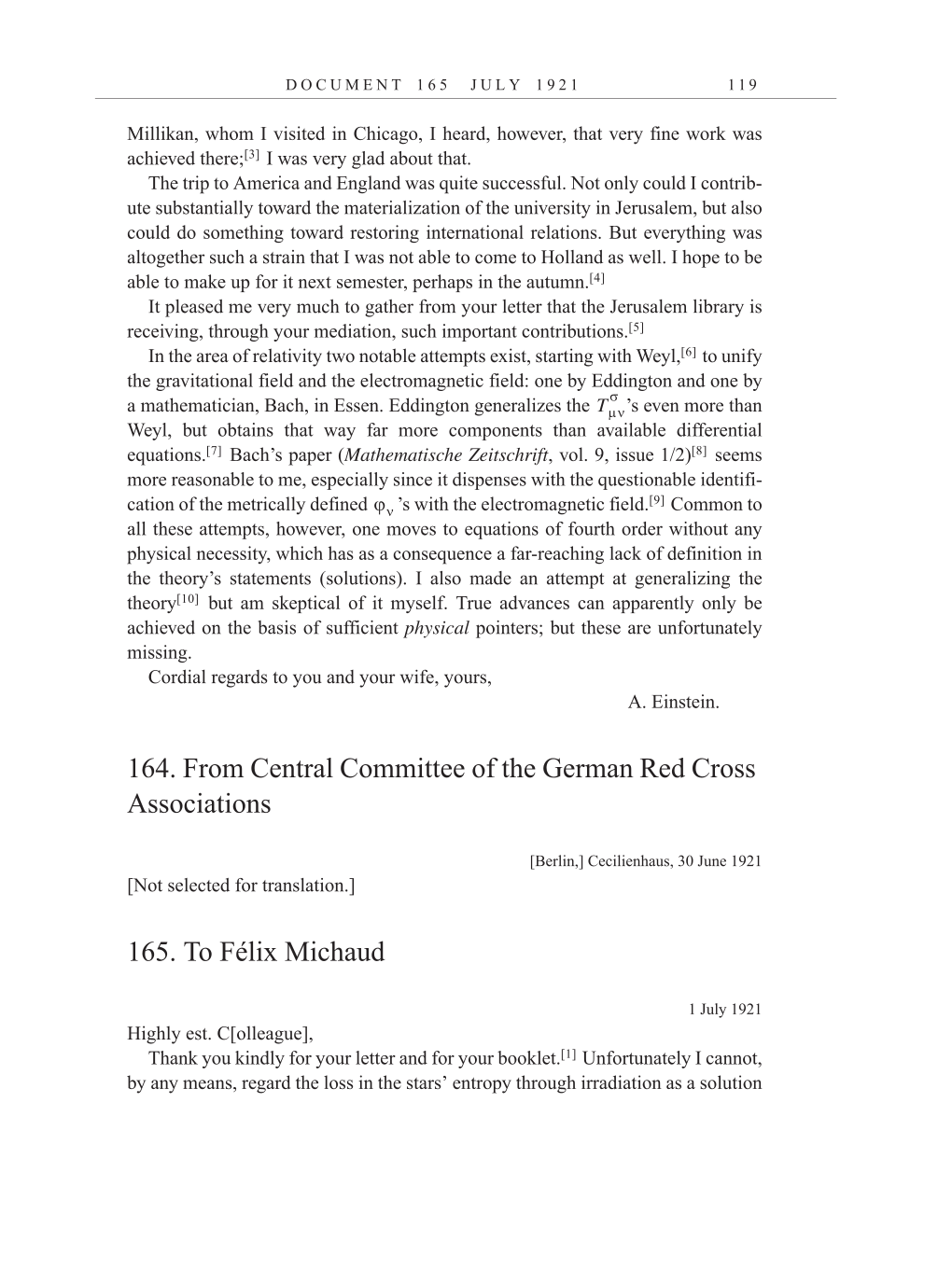D O C U M E N T 1 6 5 J U L Y 1 9 2 1 1 1 9
Millikan, whom I visited in Chicago, I heard, however, that very fine work was
achieved
there;[3]
I was very glad about that.
The trip to America and England was quite successful. Not only could I contrib-
ute substantially toward the materialization of the university in Jerusalem, but also
could do something toward restoring international relations. But everything was
altogether such a strain that I was not able to come to Holland as well. I hope to be
able to make up for it next semester, perhaps in the
autumn.[4]
It pleased me very much to gather from your letter that the Jerusalem library is
receiving, through your mediation, such important
contributions.[5]
In the area of relativity two notable attempts exist, starting with
Weyl,[6]
to unify
the gravitational field and the electromagnetic field: one by Eddington and one by
a mathematician, Bach, in Essen. Eddington generalizes the ’s even more than
Weyl, but obtains that way far more components than available differential
equations.[7]
Bach’s paper (Mathematische Zeitschrift, vol. 9, issue
1/2)[8]
seems
more reasonable to me, especially since it dispenses with the questionable identifi-
cation of the metrically defined ’s with the electromagnetic
field.[9]
Common to
all these attempts, however, one moves to equations of fourth order without any
physical necessity, which has as a consequence a far-reaching lack of definition in
the theory’s statements (solutions). I also made an attempt at generalizing the
theory[10]
but am skeptical of it myself. True advances can apparently only be
achieved on the basis of sufficient physical pointers; but these are unfortunately
missing.
Cordial regards to you and your wife, yours,
A. Einstein.
164. From Central Committee of the German Red Cross
Associations
[Berlin,] Cecilienhaus, 30 June 1921
[Not selected for translation.]
165. To Félix Michaud
1 July 1921
Highly est. C[olleague],
Thank you kindly for your letter and for your
booklet.[1]
Unfortunately I cannot,
by any means, regard the loss in the stars’ entropy through irradiation as a solution
T
